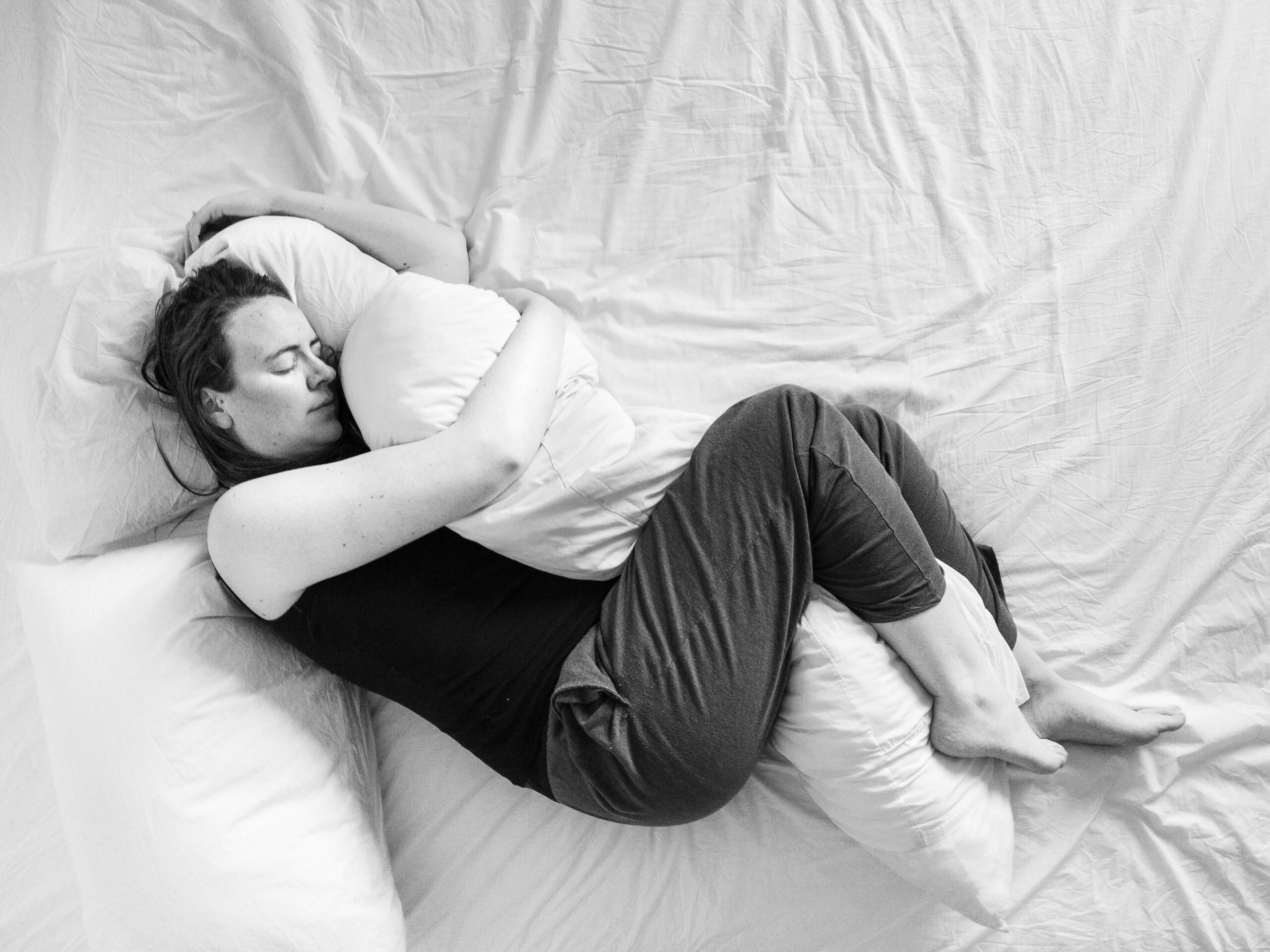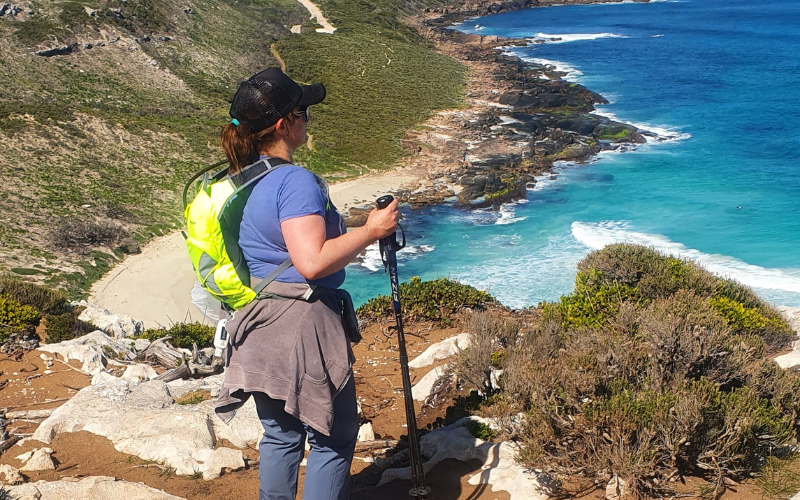My period has never resembled those period product ads that used to be on the TV. You know the ones where the smiling girl with perfect hair and makeup is frolicking in a fountain inexcusably wearing a white linen ensemble. Instead, my period involves floods of blood, clotting and a fair amount of pain. I typically spend at least 2 days in bed, wearing track pants and period underwear. I am forced to take pain and anti-nausea meds then lie in bed clutching a heat pack or pillow hoping that the pain will subside. The last thing I feel like doing when I have my endometriosis period is being anywhere near a fountain wearing white linen and there is most definitely no frolicking.
Endometriosis period
My first period lasted for over 7 days, I don’t remember it being notably painful, but I was astonished about how much blood I was losing. In a matter of days, I had graduated from panty liners and slim-lined pads to super tampons and maxi pads. I would have to change them every 40 minutes to an hour. This was particularly problematic at high school given that we had 75-minute classes so I would constantly have to excuse myself to go to the bathroom.
As time wore on, my periods were irregular but impossible to miss. I would bleed relentlessly for days on end and have to wake up a couple of times a night to change period products and avoid ruining my sheets.
A few months ago I was reading online about what defines a heavy period, its causes and links to conditions such as endometriosis. I learnt that heavy periods are typically defined as losing 80ml or more of blood in each period, having large blood clots, needing to change your pad or tampon every hour and having a period that lasts longer than 8 days. [1]
I also learnt that menstrual fluid is a mix of blood and other fluids with estimates suggesting the blood component makes up between 36-48%. [2] [3]
I’d never really stopped to think about the amount of blood I was losing in percentages and mls, so for my next period, I thought I’d take some notes and do some maths – why not?
A regular tampon holds about 5mls or one teaspoon of fluid, a super tampon 10mls and a menstrual cup 30-60mls.
During my last period, I soaked through 32 super tampons over 8 days (used a total of 45). Using the above percentages that equates to between 115-153mls of blood loss. Well into the heavy period territory.
Heavy periods can cause iron deficiency or even iron deficiency anaemia. Iron deficiency is when the iron stores in your body are too low. Without sufficient iron, your red blood cells cannot produce adequate haemoglobin – a protein that allows red blood cells to carry oxygen around your body. Iron deficiency will make you feel incredibly tired. With iron deficiency anaemia your haemoglobin levels are so low your blood is unable to deliver enough oxygen to your cells, symptoms of this include shortness of breath, extreme fatigue and dizziness.[4]
In my early twenties, my doctors were concerned about iron deficiency and insisted on regular blood tests for my iron. Given my iron levels at the time I would occasionally trial iron supplements (which caused bloating and digestive issues for me) and try to increase iron in my diet to counteract the amount I was losing during my period.
Over time as my other endo symptoms got worse and investigations continued, the focus on iron levels took a back seat. When I thought about it I realised that I hadn’t had my iron levels checked in quite some time.
So a few weeks ago, I got a test and turns out my iron stores were at the lowest they have been for many years.
My doctor strongly suggested an iron infusion. With my levels so low even if I were to eat a steak with lemon (for the vitamin C to help absorb the iron) every day for the next month, I wouldn’t be able to absorb enough iron to replace the iron I was losing during my period. So I booked one in.
The iron infusion itself was a pretty simple process. I was given a script to pick up the iron from the chemist. On the day I went to my doctor’s surgery and the doctor and nurse positioned me on the table ensuring I was as comfortable as possible and able to keep my left arm still.
A catheter was placed into my arm, and the iron was infused over an hour. I took a podcast to listen to while I watched as the iron slowly dripped from the bag into my arm, marvelling that each drop was equivalent to one iron table.
Afterwards, I had a bit of a headache and felt a bit off which lasted for a day or so, but I didn’t have any other reactions or side effects.
A few weeks later, things changed dramatically.
Before the iron infusion, I was breathless when walking, constantly napping through the day, and exhausted when I woke in the morning regardless of how much sleep I had. It felt like I was walking through treacle – everything took a lot of effort.
In just two weeks I realised that I had not once needed to or thought about napping during the day, I had managed to complete exercise easily without my usual exertion and I could get 7-8 hours of sleep and wake up feeling good!
My first period after the iron infusion was heavy and I experienced my usual endo symptoms of bloating, pain and nausea, but interestingly it didn’t wipe me out as nearly as much as it usually would.
So I’m going to take it as a win, and while I may not be frolicking under a waterfall wearing white linen any time soon, I’m grateful that I have just that little more energy.
I hope that you can also find a win today, no matter how small.
Sending love
Rach
XX
Medical Addendum
Heavy menstrual bleeding is commonly associated with endometriosis, however, this is not the only cause of that symptom. If you are having heavy periods, you should see your general practitioner as a first step in your care. There may be other issues including fibroids, adenomyosis or hormonal issues that need to be addressed. Investigations such as an ultrasound, timed immediately after your period, can help in determining if there are additional factors that need to be addressed. Treatment options will vary, depending on the cause and discuss these with your doctor initially.
For more information on heavy periods go to:
Resources
1: Heavy Menstrual Bleeding, the Royal Australian and New Zealand College of Obstetricians and Gynaecologists, March, 2018, accessed online https://ranzcog.edu.au/RANZCOG_SITE/media/RANZCOG-MEDIA/Women%27s%20Health/Patient%20information/Heavy-menstrual-bleeding-bleeding-pamphlet.pdf?ext=.pdf
2. How much Blood Do you Lose on Your Period, Kimberly Holland, reviewed by Valinda Riggins Nwadike, published online May 30, 2018 accessed at https://www.healthline.com/health/how-much-blood-do-you-lose-on-your-period#:~:text=First%2C%20it’s%20important%20to%20understand,uterine%20lining
3. Fraser IS, Warner P, Marantos PA. Estimating menstrual blood loss in women with normal and excessive menstrual fluid volume. Obstet Gynecol. 2001 Nov;98(5 Pt 1):806-14. doi: 10.1016/s0029-7844(01)01581-2. PMID: 11704173, accessed online https://pubmed.ncbi.nlm.nih.gov/11704173/
4. Iron deficiency – adults, Better Health Channel, Department of Health, State Government Victoria, Australia, State of Victoria 2020, accessed online https://www.betterhealth.vic.gov.au/health/conditionsandtreatments/iron-deficiency-adults
Photography provided by Cole Bennets
Written by,
Rachel Burke











